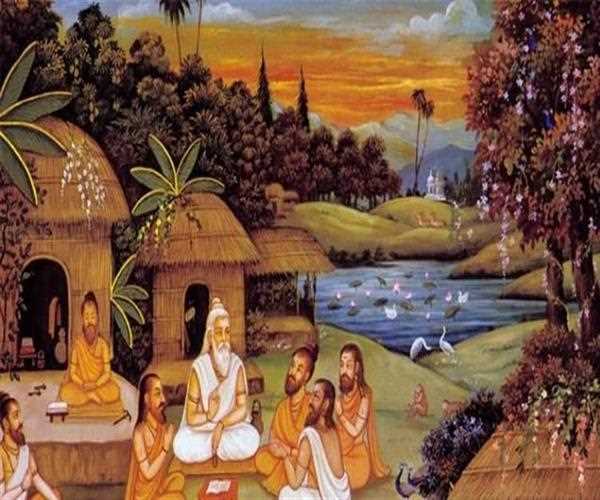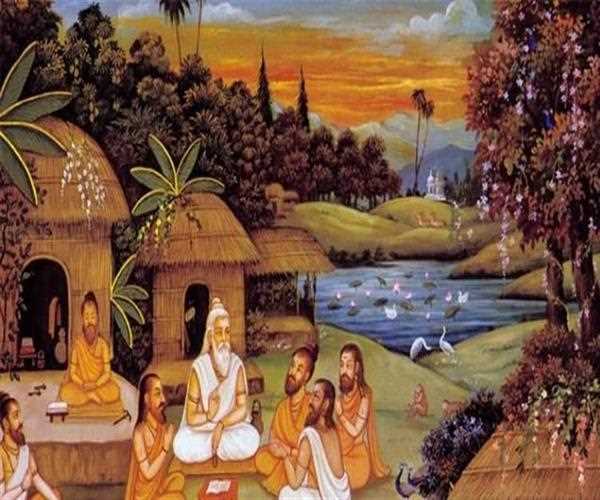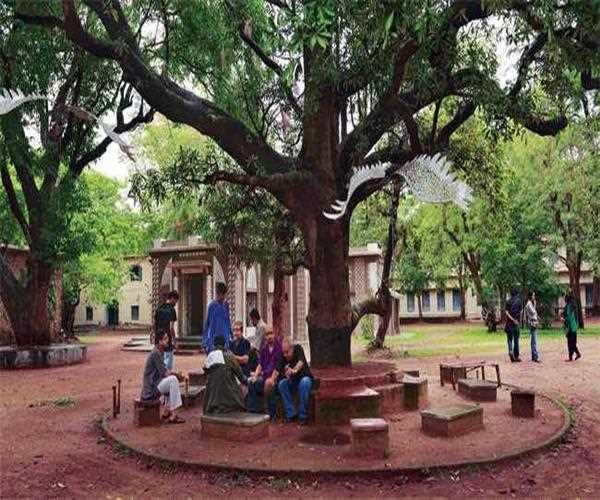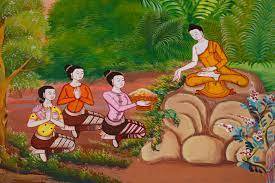
19-Feb-2022 , Updated on 2/19/2022 11:26:03 AM
Gurukul system and its essence in India
The origin of the gurukul system dates back to 5000 BC in Indian Subcontinent, more prevalent during the Vedic Age. Gurukul was actually the home of teacher or Acharya and was the center of learning where pupils resided till their education got complete. All were considered equal at the Gurukul and guru (teacher) as well as shisya (student) resided in the same house or lived near to each other. This relationship between guru and shishya was so sacred that no fee was taken from the students. However, the student had to offer a gurudakshina which was a token of respect paid to the teacher. It was mainly in the form of money or a special task that the student had to perform for the teacher.
This type of education system was seen during the time of buddha after he was enlightened and started preaching buddhism with the help of his five disciples started under the bodhi tree.

Gurukul education system is still seen in Shantiniketan, Bolpur, Birbhum, West Bengal started by the famous poet and freedom fighter, the composer of our national anthem Rabindranath Tagore. Students are still seen sitting under the tree shade surrounding there guru keeping the prints of gurukul education system and its essence.

Nowadays though this type of education system is hardly seen and more digitization can be seen making the education system less fun and non- interactive. We should make efforts in bringing this type of education System back in India bringing and building the practical knowledge in the students. Keeping the students interactive and building better bonding with their teachers(Guru). This education system focuses less on rank and more on the knowledge acquired by the students.
The idea of inculcating a Gurukul system in Indian education is just to assist the children in understanding the concept of a balanced life. This very ideology of balance should be taught to the kids from a young age so that they make informed decisions about work, food, exercise and the way they wish to live there life.

The education imparted under the Gurukul system was highly influenced by the cultural and religious practices at that time.
Since this system of education developed during the Vedic period, the main sources of teaching came through the Vedas, Puranas and other religious texts. It is a wrong notion that only the Vedas and Upanishads were taught as subjects in the gurukul system of education. This system was a comprehensive and all-encompassing system of education.
It included the holistic development of students. Focus was on the moral, physical and spiritual wellbeing of the students. Apart from the knowledge of Mathematics and various sciences, the shishyas were trained in yoga, exercises, physical labor, games, archery, martial arts and sports.
The routine followed in Gurukuls was rigid. Students followed a set timetable. This ensured discipline and regulation in the lives of all the students. Students were taught society responsibilities.
A typical day in a gurukul would start in the early hours of sunrise and include chores like cleaning, cooking and physical fitness. Shishyas were not only taught concepts from the texts but were also trained in regular activities that promoted sustenance on a daily basis. Under the gurukul system of education students were taught the way of life apart from core subjects. Shishyas would lead simple and austere lives like their Gurus. They were expected to obey the Gurus with great reverence and veneration.
Therefore, it is safe to say that the ancient gurukul system of education was a way of life. The extended part of Gurukuls was what we would call the modern-day universities.
Some of our texts contain information on famous universities like Taxila, Nalanda and Vikramshila . These served as centers for advanced learning. Education during ancient times was sacred. It was a venerated and revered field. Due to its adulation, no fixed fee was charged to students. In return for the knowledge acquired from the teacher, the pupils paid Guru Dakshina to the teacher. It was a token of respect from a student to the teacher, on completing the period of study. This Guru Dakshina could be in the form of money or a certain task the teacher would require the student to complete.
Speaking of Guru Dakshina, an interesting story in the epic Mahabharatha speaks of Eklavya, a young prince of a jungle tribe. In this story, Drona asks for Eklavya’s right thumb as Gurudakshina. Eklavya readily cuts of his right thumb and offers it as Guru Dakshina.
This shows the sacred and revered relationship between a teacher and a pupil in ancient times. India has all together lost the glory of this system due to its modern technology of teaching and learning. Now no student treats his Guru his god and devotes his life's success to him. They don't consider the art of learning and teaching, the importance of education as a boon rather they prefer to opt it as a secondary and rather optional choice of life. Even the teachers have lost their interest in this education process and they rather focus it as their career goal and source of income. They neglect the real meaning of education system and pay no heed to the age old Gurukul System of India.
But this can be and has to change as a way to bring back the heritage of our country. Our life has been way much modernized due to this digital India concept and we no longer pay importance to such heritage history but yet if it gets back in our heart the lost enlightenment of this bond of guru shishya we can still have a life with better soul and living.

Student
Seeking an opportunity to establish a certified career in agriculture marketing sector as being a keen and organized person believing in team work, utilizing my knowledge as it serves a natural interest to give spark to innovative ideas.
Join Our Newsletter
Subscribe to our newsletter to receive emails about new views posts, releases and updates.
Copyright 2010 - 2026 MindStick Software Pvt. Ltd. All Rights Reserved Privacy Policy | Terms & Conditions | Cookie Policy